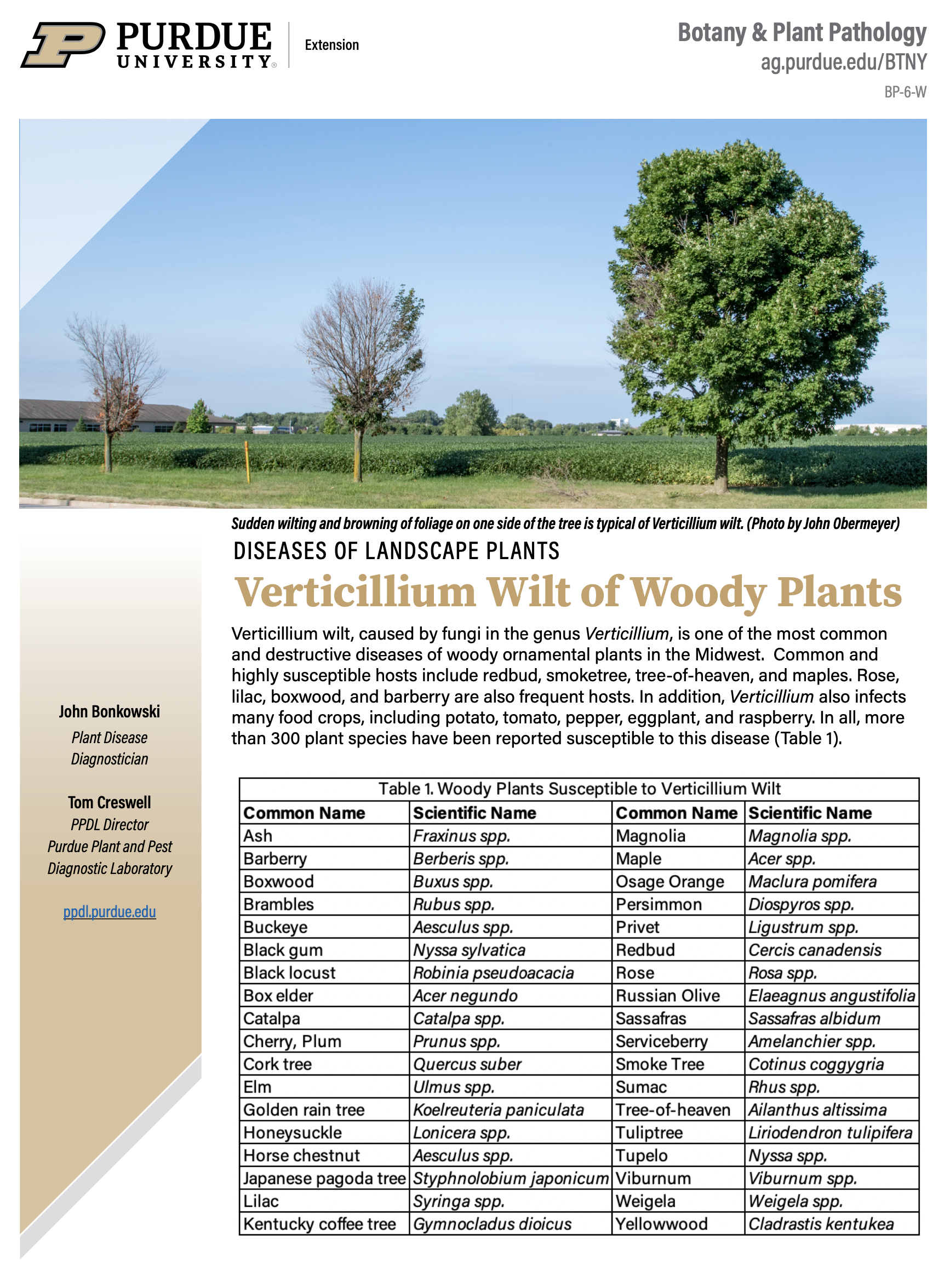 Product Code: BP-6-W
Product Code: BP-6-W
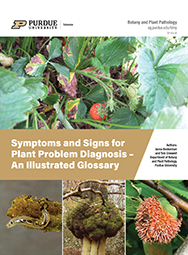 Product Code: BP-164
Product Code: BP-164
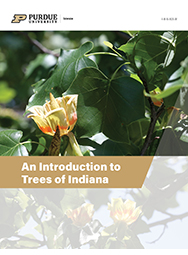 Product Code: 4-H-15-80A
Product Code: 4-H-15-80A
 Product Code: BP-206-W
Product Code: BP-206-W
 Product Code: FNR-FAQ-14-W
Product Code: FNR-FAQ-14-W
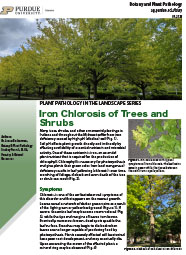 Product Code: BP-27-W
Product Code: BP-27-W
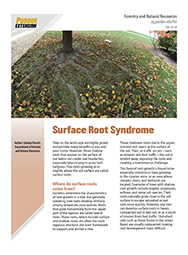 Product Code: FNR-585-W
Product Code: FNR-585-W
Trees in the landscape are highly prized and provide many benefits to you and your home. However, those shallow roots that appear on the surface of our lawns can create real headaches, especially when trying to grow l More...
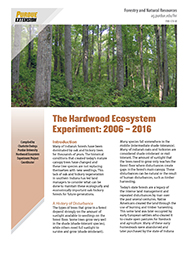 Product Code: FNR-570-W
Product Code: FNR-570-W
Many of Indiana's forests have been dominated by oak and hickory trees for thousands of years. The historical conditions that shaped today's forests have changed, altering forest composition and leading land managers More...
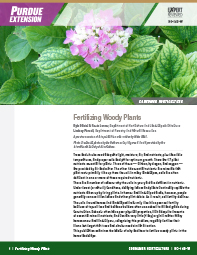 Product Code: HO-140-W
Product Code: HO-140-W
This publication examines the basics of why and how to fertilize woody plants in the home landscape.
Format: PDF
Pages: 10
Language: Engl More...
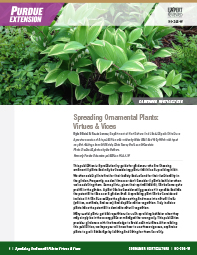 Product Code: HO-295-W
Product Code: HO-295-W
This publication is a precautionary guide for gardeners who are choosing ornamental plants and may be considering plants that have a spreading habit. Formerly Purdue Extension publication HLA-1-W
Format More...
 Product Code: BP-28-W
Product Code: BP-28-W
This publication describes the symptoms of oak wilt disease, its cause, and management options that are available.
Format: PDF
Pages: 5
Language: More...
Trees can grow in ways that are not always the safest or most sustainable for long-term health and safety. This can happen for many reasons: species characteristics, growing location, or lack of proper pruning in earl More...
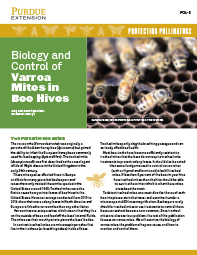 Product Code: POL-8
Product Code: POL-8
This publication describes varroa mites and their effects on honey bee hives. It also recommends monitoring and management practices to protect hives against this pest.
Format: Booklet, PDF, an More...
 Product Code: PPP-116
Product Code: PPP-116
This publication, which is part of the Protecting Pollinators series, explains the complex biology of honey bees. It also explores the roles pesticides may play in bee health, examines the latest knowledge in this fas More...
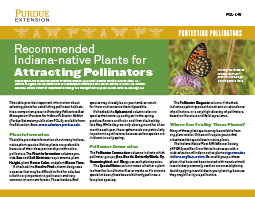 Product Code: POL-6-W
Product Code: POL-6-W
This publication provides a list of recommended plants that homeowners and others can use to establish and conserve effective pollinator habitats in Indiana - from small-scale backyard improvements to large-scale plan More...
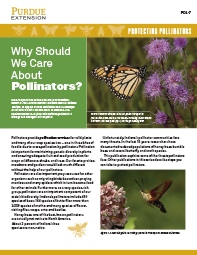 Product Code: POL-7
Product Code: POL-7
This publication explains some of the threats pollinators face. Other publications in the Protecting Pollinators series describe steps you can take to protect pollinators.
Format: Booklet, PDF, More...
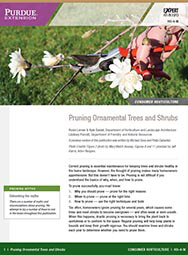 Product Code: HO-4-W
Product Code: HO-4-W
Correct pruning is essential maintenance for keeping trees and shrubs healthy in the home landscape. However, the thought of pruning makes many homeowners apprehensive. But this doesn't have to be. This publication re More...
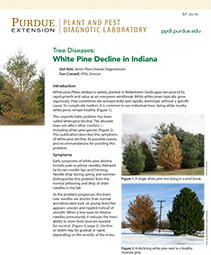 Product Code: BP-34-W
Product Code: BP-34-W
White pine trees are a common component of Midwest landscapes. Sometimes, these trees die unexpectedly and rapidly, seemingly without a specific cause. This unpredictable problem is called white pine decline. The publ More...
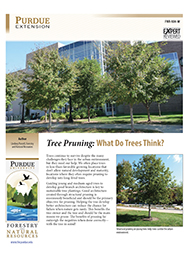 Product Code: FNR-534-W
Product Code: FNR-534-W
This 6-page publication explains the physiological and physical changes that happen within trees as a response to pruning. Guiding young and medium-aged trees to develop good branch architecture is key to sustainable More...
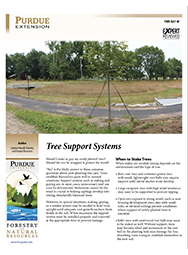 Product Code: FNR-547-W
Product Code: FNR-547-W
Tree Support Systems answers common questions about post-planting tree care. It describes when to stake trees, how to stake and guy trees, and proper methods of trunk protection.
Trees establish themselves qui More...
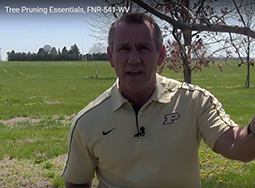 Product Code: FNR-541-WV
Product Code: FNR-541-WV
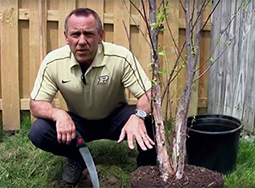 Product Code: FNR-540-WV
Product Code: FNR-540-WV
Trees and all forestlands are major assets to our cities, towns, and communities. Urban trees, in particular, provide aesthetic, functional, and environmental benefits to improve the quality of life. A well-planted an More...
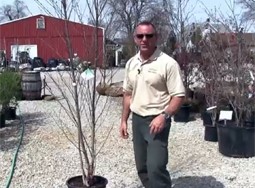 Product Code: FNR-538-WV
Product Code: FNR-538-WV
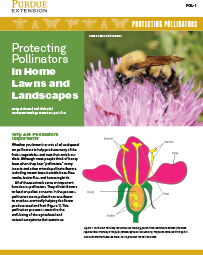 Product Code: POL-1
Product Code: POL-1
Whether you know it or not, we all depend on pollinators for the fruits, vegetables, nuts, and flowers that enrich our lives. But pollinators face many threats. This publication explains what homeowners can do to prot More...
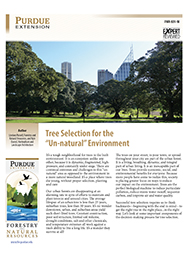 Product Code: FNR-531-W
Product Code: FNR-531-W
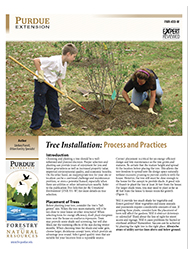 Product Code: FNR-433-W
Product Code: FNR-433-W
Choosing and planting a tree should be a well-informed and planned decision. Proper selection and planting of urban trees can provide years of enjoyment for you and future generations as well as increased property val More...
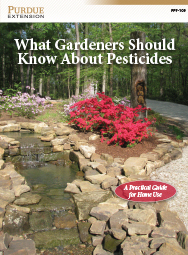 Product Code: PPP-109
Product Code: PPP-109
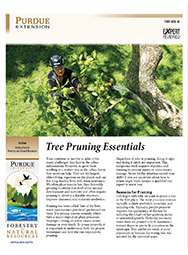 Product Code: FNR-506-W
Product Code: FNR-506-W
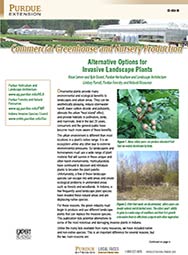 Product Code: ID-464-W
Product Code: ID-464-W
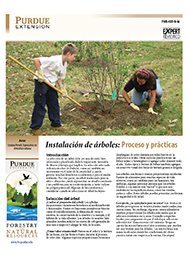 Product Code: FNR-433-S-W
Product Code: FNR-433-S-W
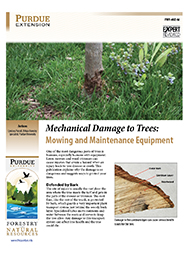 Product Code: FNR-492-W
Product Code: FNR-492-W
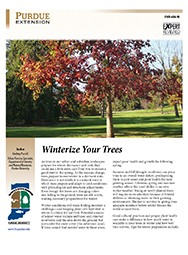 Product Code: FNR-484-W
Product Code: FNR-484-W
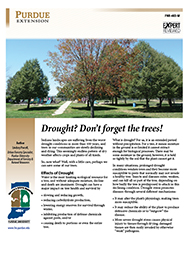 Product Code: FNR-483-W
Product Code: FNR-483-W
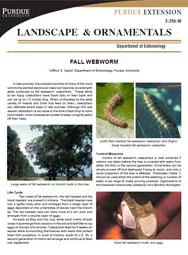 Product Code: E-255-W
Product Code: E-255-W
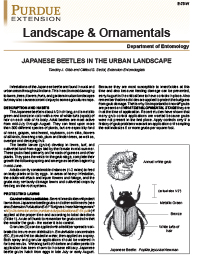 Product Code: E-75-W
Product Code: E-75-W
Japanese beetle infestations are found in rural and urban areas throughout Indiana. This publication describes Japanese beetle habits and how to control them in lawns, ornamentals, and food plants.
Forma More...
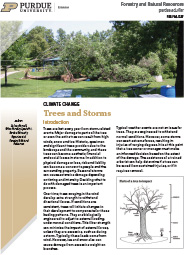 Product Code: FNR-FAQ-12-W
Product Code: FNR-FAQ-12-W
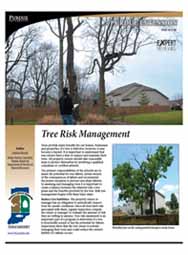 Product Code: FNR-475-W
Product Code: FNR-475-W
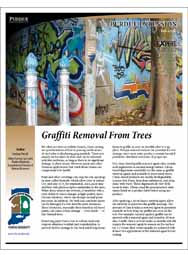 Product Code: FNR-474-W
Product Code: FNR-474-W
Urban Forestry, Department of Forestry & Natural R More...
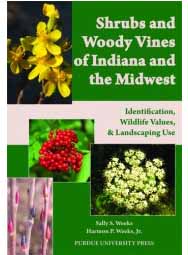 Product Code: 28-6
Product Code: 28-6
 Product Code: FNR-FAQ-11-W
Product Code: FNR-FAQ-11-W
Urban Forestry, Department of Forestry & Natural Resources
More...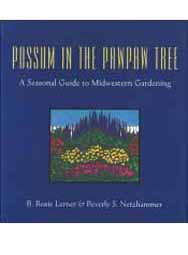 Product Code: 28-4
Product Code: 28-4
Inspired by actual gardeners' inquiries, each chapter deals with such down-to-earth subjects as when to start seeds, why plants might fail to bloom, pruning techniques, identifying and controlling common pests, home f More...
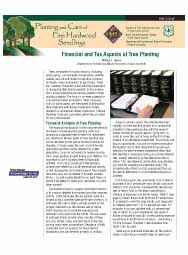 Product Code: FNR-214-W
Product Code: FNR-214-W
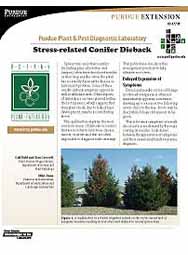 Product Code: ID-477-W
Product Code: ID-477-W
This publication explains the most common causes of dieback in conifers and recommends management practices to prevent the problem.
Format: PDF.
Pages: 3.
 Product Code: FNR-224-W
Product Code: FNR-224-W
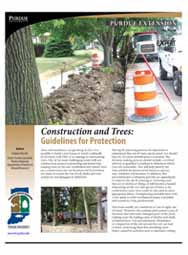 Product Code: FNR-463-W
Product Code: FNR-463-W
This publication provides information on protecting trees within or near construction sites and home building projects from damage or death.
Urban Forestry, Department of Forestry & Natural Resources
More...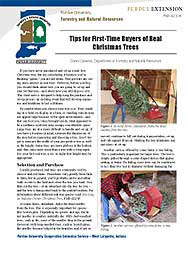 Product Code: FNR-423-W
Product Code: FNR-423-W
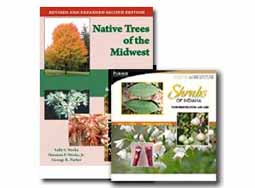 Product Code: CD-FNR-6-C
Product Code: CD-FNR-6-C
Indiana is home to more than 100 species of shrubs that are native to the state and the Midwest. This publication was inspired by the work of pioneer botanist Charles Deam.
More... Product Code: 28-1
Product Code: 28-1
A great companion reference book to the Shrubs of Indiana CD, the book Native Trees of the Midwest is a definitive guide to identifying trees in Indiana and surrounding states. Descri More...
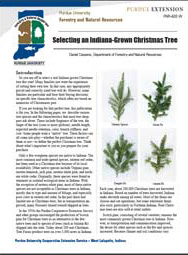 Product Code: FNR-422-W
Product Code: FNR-422-W
 Product Code: CD-FNR-6
Product Code: CD-FNR-6
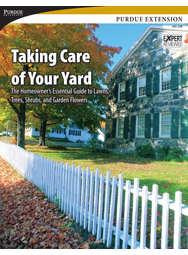 Product Code: HO-236-W
Product Code: HO-236-W
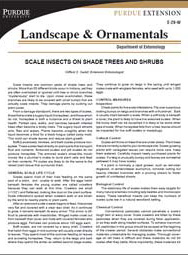 Product Code: E-29-W
Product Code: E-29-W
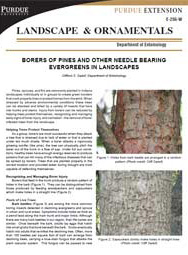 Product Code: E-256-W
Product Code: E-256-W
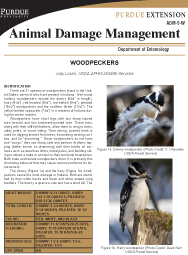 Product Code: ADM-5-W
Product Code: ADM-5-W
There are 21 woodpecker species in the United States, seven of which live in Indiana. This publication shows readers how to identify woodpeckers, the damage they can cause, and the ways you can control them.
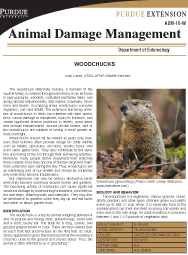 Product Code: ADM-16-W
Product Code: ADM-16-W
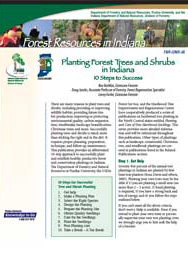 Product Code: FNR-IDNR-36
Product Code: FNR-IDNR-36
 Product Code: FNR-IDNR-36P
Product Code: FNR-IDNR-36P
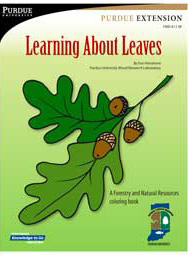 Product Code: FNR-411-W
Product Code: FNR-411-W
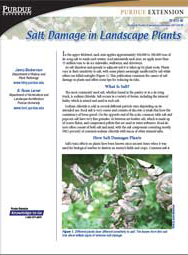 Product Code: ID-412-W
Product Code: ID-412-W
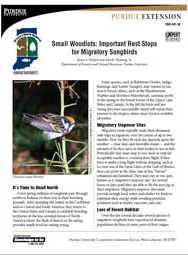 Product Code: FNR-401-W
Product Code: FNR-401-W
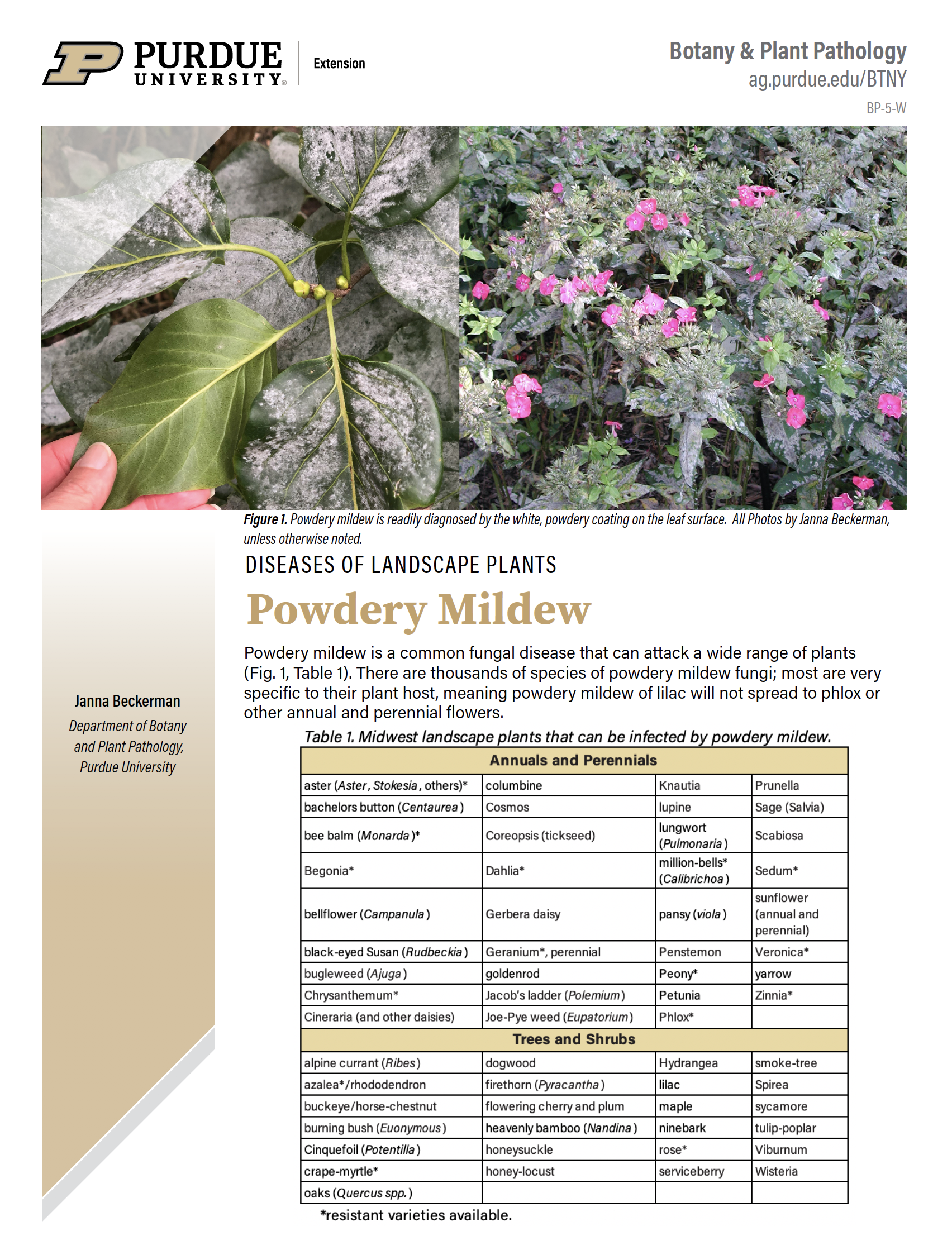 Product Code: BP-5-W
Product Code: BP-5-W
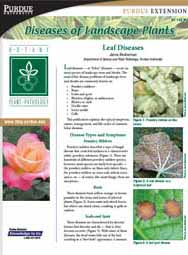 Product Code: BP-143-W
Product Code: BP-143-W
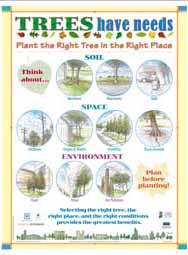 Product Code: FNR-197-W
Product Code: FNR-197-W
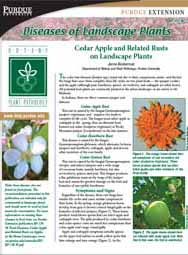 Product Code: BP-137-W
Product Code: BP-137-W
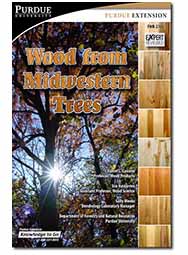 Product Code: FNR-270
Product Code: FNR-270
 Product Code: BP-1-W
Product Code: BP-1-W
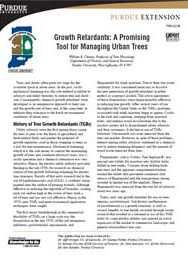 Product Code: FNR-252-W
Product Code: FNR-252-W
 Product Code: FNR-FAQ-19-W
Product Code: FNR-FAQ-19-W
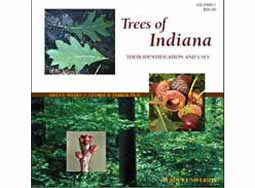 Product Code: CD-FNR-1
Product Code: CD-FNR-1
The Trees of Indiana CD-ROM was designed for the student of dendrology who has some fundamental knowledge of taxonomic groupings of trees. Although this knowledge is not essential, it is helpful. An introductory secti More...
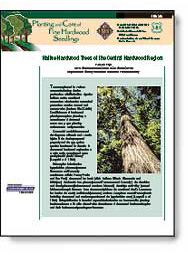 Product Code: FNR-218
Product Code: FNR-218
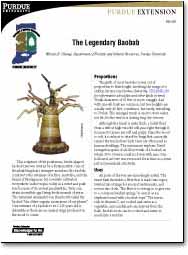 Product Code: FNR-259-W
Product Code: FNR-259-W
 Product Code: FNR-250-W
Product Code: FNR-250-W
 Product Code: 28-27
Product Code: 28-27
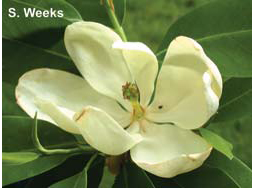 Product Code: FNR-238-W
Product Code: FNR-238-W
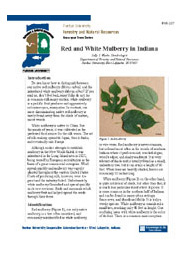 Product Code: FNR-237-W
Product Code: FNR-237-W
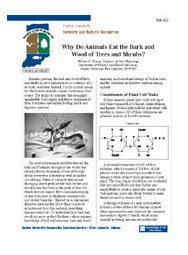 Product Code: FNR-203-W
Product Code: FNR-203-W
 Product Code: ID-217-W
Product Code: ID-217-W
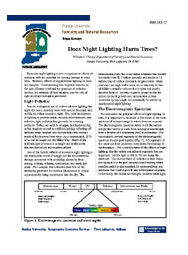 Product Code: FNR-FAQ-17-W
Product Code: FNR-FAQ-17-W
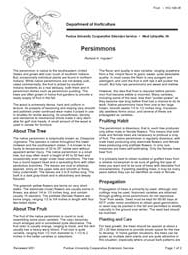 Product Code: HO-108-W
Product Code: HO-108-W
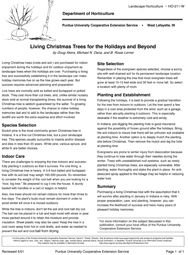 Product Code: HO-211-W
Product Code: HO-211-W
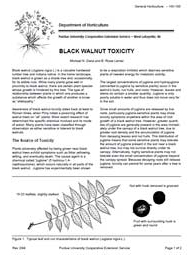 Product Code: HO-193-W
Product Code: HO-193-W
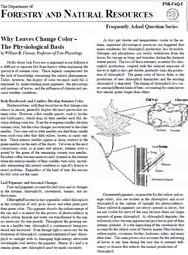 Product Code: FNR-FAQ-5-W
Product Code: FNR-FAQ-5-W
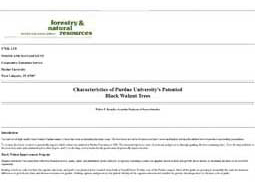 Product Code: FNR-115-W
Product Code: FNR-115-W
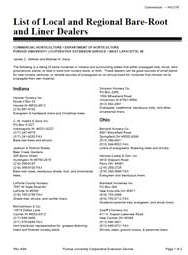 Product Code: HO-216-W
Product Code: HO-216-W
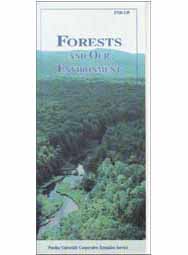 Product Code: FNR-139-W
Product Code: FNR-139-W
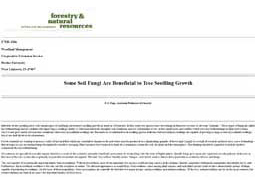 Product Code: FNR-104-W
Product Code: FNR-104-W
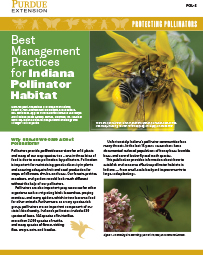 Product Code: POL-5
Product Code: POL-5
This publication provides information about how to establish and conserve effective pollinator habitats in Indiana - from small-scale backyard improvements to large-scale plantings.
Format: Bo More...